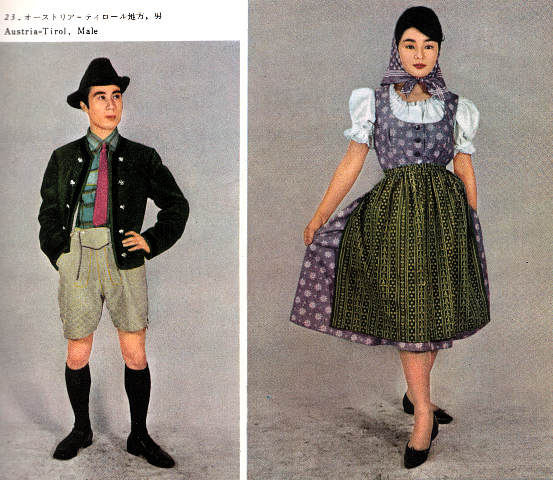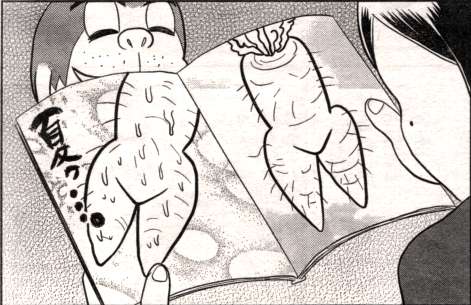Natural color
In 1961, TANAKA Chiyo and her husband Kaoru published a book called 『原色世界衣服大図鑑』 (supplied English title: World Folk Costumes in Natural Colour.) The book contained photographs of and information about alleged folk costumes they had collected in their travels around the world. (As they explain in the introduction, there's nothing in there from Africa, China, the Soviet Union or Australia, because they hadn't yet visited those places.)
"Most of the clothing in this book is modeled by female students of [Chiyo's] school, with [myself] as the cameraman," explains Kaoru in his introduction. "There are pros and cons to this approach...."

The pros are that when comparing clothing from all around the world, using models of a single "folk" (民族) as the medium allows a more "objective and impartial" (各巻的に公平) viewing experience; that taking photographs in a studio rather than on location makes the result more consistent; and also that Japanese readers can see which fabrics and designs suit Japanese wearers, and incorporate them into their own work.
The downside, of course, is that the reader can't see how the clothing works in context, on a person of the appropriate culture (and skin color).

I love this book. Its color plates don't scan so well, but they are a delight on the page. But what I really dig about it is its tone. Its irony-free project of creating a context-optional catalogue of the world's folkways is very Meiji, especially considering its target audience: modern Japanese designers standing entirely outside any folk tradition. It is not for mere completeness that Okinawan bingata and even plain old mainland kimono are in here.
![[No-sword]](http://no-sword.jp/images/site/no-sword_banner.jpg)
![[Sunset]](http://no-sword.jp/images/2007/2007-11-26_s.jpg)



